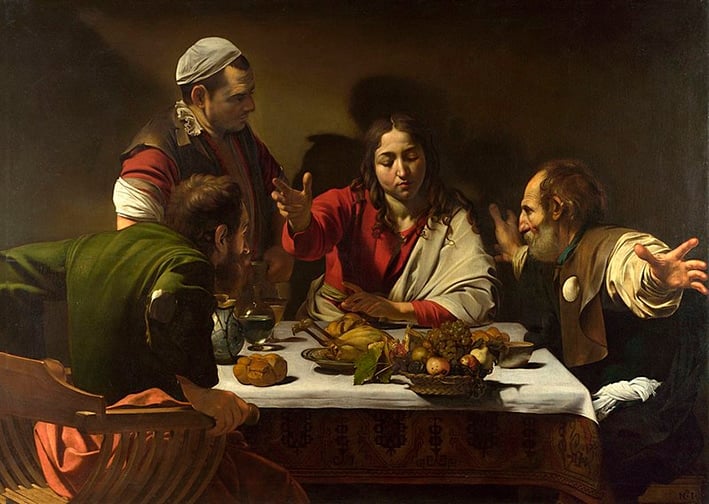
Where is Emmaus, as mentioned in Luke’s Gospel? I have heard there are three possible sites!
First of all, we cannot be absolutely sure which of the contending sites is the true Emmaus where Jesus revealed himself to the disciples on the afternoon of his resurrection, as described by St Luke (cf. Lk 24:13-35). At present it remains a matter of conjecture, although some sites are more probable than others.
Let us begin with what St Luke has to say about it. The most important piece of information he gives is that Emmaus was some 60 stadia, about eleven kilometres or seven miles, from Jerusalem. A stadion was 185 metres, or 607 feet. Nonetheless, the second Catholic edition of the RSV version of the Bible, in a footnote, says that other ancient authorities read 160 stadia. One of the more likely sites is Abu Ghosh, located 60 stadia, or eleven kilometres, west of Jerusalem, so it is a perfect match. Recent on-going archaeological investigations in Kiriath Yearim, next to Abu Ghosh, have uncovered the massive walls of a fortification dated to the first half of the second century BC.
This was the time when, according to the first book of the Maccabees, the Seleucid general Bacchides, who defeated Judas the Maccabean, “built strong cities in Judea: the fortress of Jericho, and Emmaus, and Beth-horon … with high walls and gates and bars” (1 Mac 9:50).
The Jewish Roman historian Flavius Josephus, in his Antiquities, also attests to Bacchides having built a ring of fortresses guarding the approaches to Jerusalem. This is the only known case of large-scale fortifications built in Judea at that time, according to Thomas Römer, professor of biblical studies at the College de France, who is involved in the archaeological investigations in Abu Ghosh.
Most of the cities mentioned by Josephus and 1 Maccabees can be identified as lying to the north, east and south of Jerusalem, and indeed remains of fortifications have been found in some of them. The only city known to lie west of Jerusalem, on the strategic road to Jaffa and the Mediterranean coast, is Emmaus.
So the recent discovery of huge fortifications dating to that time in Abu Ghosh lends great credibility to that city being the Emmaus of the Gospel. The fact that the Crusaders built a church there adds to the likelihood.
The more traditional identification of Emmaus is with the present Emmaus-Nicopolis, 160 stadia west of Jerusalem. It was there, “near Emmaus in the plain,” that in 165 BC Judas Maccabeus defeated the Seleucid army of Nicanor and Gorgias (cf. 1 Mac 3:38-4:25). Apparently, there are remains of a fortress built there too at that time.
Eusebius of Caesarea, in his Onomasticon, a list of Biblical places drawn up around 295 AD, says that “Emmaus, from which issued Cleophas, who is mentioned in St Luke’s gospel, is today called Nicopolis, an important city of Palestine”.
St Jerome, as well as confirming this theory when he translated Eusebius into Latin, tells us that in 386 he made a pilgrimage to “Nicopolis, formerly called Emmaus, where our Lord, recognised in the breaking of the bread, consecrated the house of Cleophas as a church” (Letters, 108, Epitaphium Sanctae Paulae, 8).
The place today lies in ruins, although the remains of a Byzantine-era basilica and a crusader church can still be seen. The fact that this site is 30 kilometres from Jerusalem, a route with high hills and deep valleys, makes it very difficult for the two disciples to have walked that distance during the day, a journey of at least six hours, and then returned in the dark that same night, arriving in Jerusalem well after midnight, when Christ appeared to them and the other apostles (cf. Lk 24:36).
A third possible site is the village of Al-Qubeybeh, 60 stadia north of Jerusalem, which stands on an ancient Roman fort called Castellum Emmaus. The Franciscans, who arrived there in 1355, discovered some local traditions that gave grounds for identifying it with Cleophas’ hometown. Excavations at the end of the eighteenth century revealed the remains of a crusaders’ basilica there. But, overall, there is less tradition in favour of this site.
So, as is clear, we cannot know with any certainty which of these was the true Emmaus.
